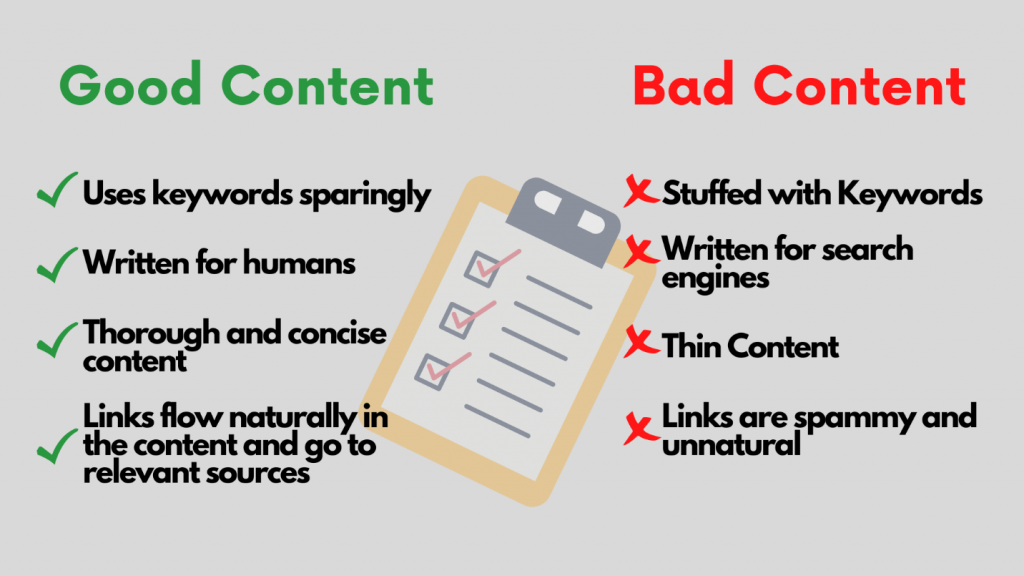12 Best Practices for Writing Good Website Content
It is imperative for a company to be creating compelling and attractive content if they want to obtain organic visibility for their site. The search results on Google have become too competitive to expect to drive users to your site without thorough and compelling content.
You might not be sure what to write about, and for many people it is their first time writing web content. If you are looking to craft content that will rank for target keywords, then your page should appeal to readers and search engines alike. This is done by grabbing your reader’s attention and then providing exactly what they are looking for.
This is easier said than done, and the steps to writing effective content can be broken down into a list of best practices every writer should follow. By following these steps closely, you will be enhancing the readability and SEO effectiveness of your content.
What is Web Copy?
Web copy is any kind of body text that exists on your website, often located on unique pages and responding to specific purposes and queries. It is the primary factor Google uses to evaluate the quality of your pages and website as a whole. Good content will:- Sell your brand’s products or services
- Engage with your audience
- Convey a clear purpose
- Respond to your user’s query directly and clearly
Why is Good Content Important for SEO?
Good content is necessary if you hope to rank on Google for any kind of keyword. It is how Google best understands the purpose and quality of your page. Users may respond to visual assets or interactive elements, but text is how their questions are answered. It is also how you best communicate your brand’s value, as well as your product’s value. Good content should answer a question thoroughly, provide completely accurate information, and drive users further toward a conversion. When website owners or writers new to web writing begin crafting content with SEO in mind, they often start trying to rank on Google using unethical practices, which is referred to as black-hat SEO. All of these tactics have been attempted by many sites over the past 20 years, and Google has become very skilled at detecting and penalizing this behavior. The most common black-hat SEO tactics include:- Keyword stuffing: Trying to place your target keyword too many times on the page.
- Thin content: Content that is not thorough or effective in responding to user needs.
- Link Exchange: Trying to obtain inbound links by reaching out to other sites and exchanging an inbound link to and from their site.
- Spammy and/or affiliate links: Any kind of links that direct users to a site that is not relevant. Often, it is used to get more links pointing to your own site, or it is a product of link exchange.
- Link schemes: There are many schemes that have been used to try to get more inbound links to your content. This can include listing links to your page hundreds of times on a separate page, using a subdomain to direct hundreds of links to your primary site, or using hidden text to place links to a target page all over other pages.
- Article Spinning: This is the process of turning one article into multiple articles, so that you can take advantage of the value of ‘fresh’ content. This usually leads to poor-quality content and the tactic can be detected by Google.

12 Best Practices for Writing Web Content
The following best practices should be used when you are writing new content for your website. This list is broken down into three phases of writing: pre-writing, writing, and post-writing. As you are writing, refer back to these tips and make sure you are following guidelines every step of the writing process.Pre-Writing Tips
It is very important to devise a thorough plan for your content before you even begin writing. This will ensure that you are really pursuing a valuable opportunity, and that you don’t lose sight of your SEO objectives along the way.Define Your Purpose
Define Your Audience Interest
- Who are the people coming to my website? (i.e., gender, age, parental status, etc.)
- What kinds of problems are they looking to solve?
- What keywords are they using to search for my product or service?
Analyze Your Competition
Write For Humans, Not Search Engines
Be The Best Answer
Enhance Your “Scanability”
- Headers and subheadings
- Bulleted lists
- Images and other visual elements
- Quotes in larger bold text

Use Links For Easier Navigation
Avoid Grammatical Errors
Use Visuals and Multimedia
Make Your Call-To-Action Worth It
Post-Writing Tips
Many people think that once content has been written and reviewed for grammar and spelling, it is ready to post. Any SEO specialist understands that much of the actual search engine optimization is done after the content has been written.Optimize For SEO
- Are you using the keyword effectively? Make sure the keyword is also not being over-used.
- Craft engaging metadata and page titles, using target keywords effectively.
- Make your URL readable and clear.
- Include any additional links, both internal and external.
- Optimize all images for loading and accessibility.









